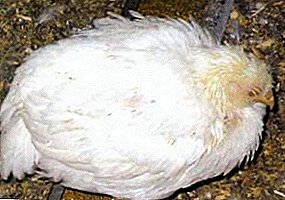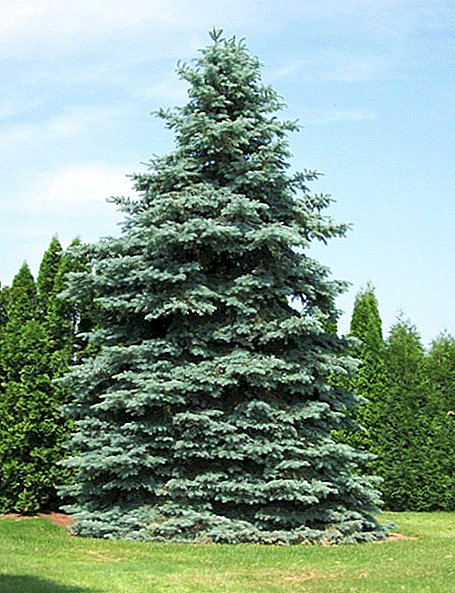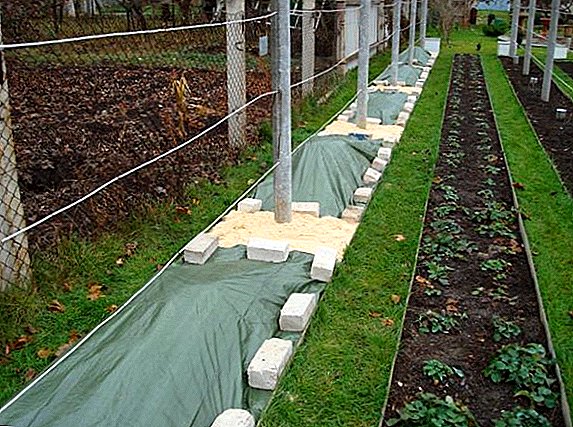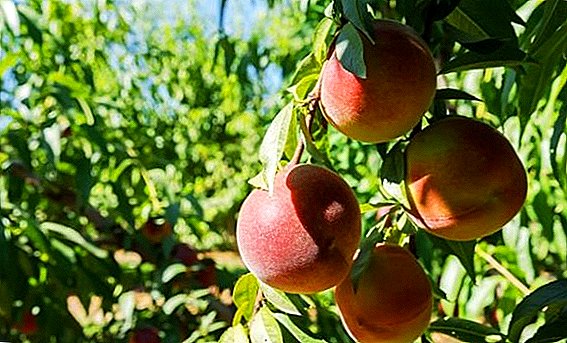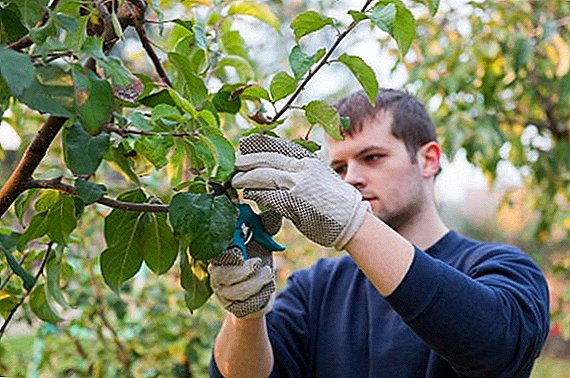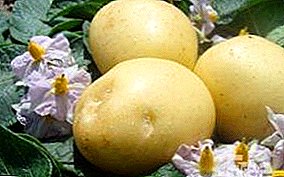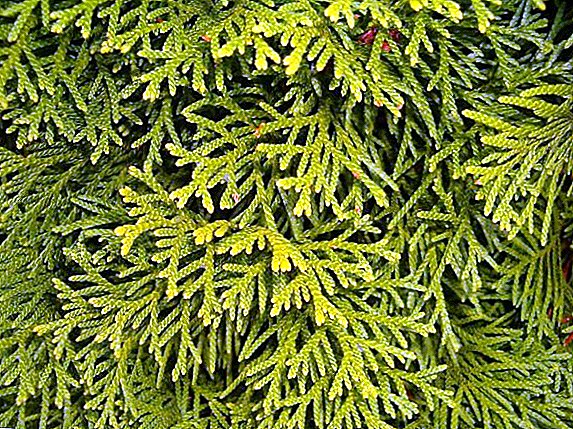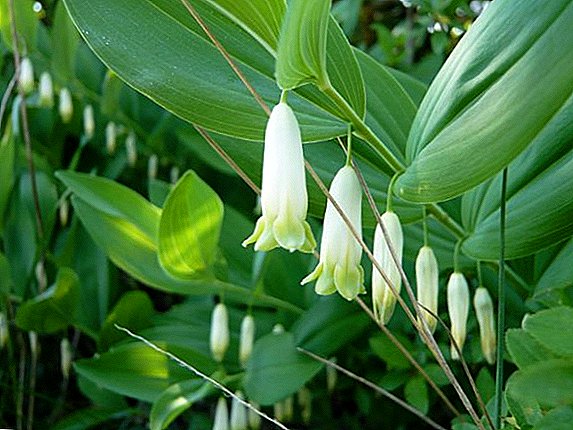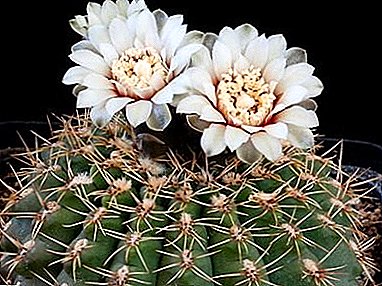
This small and extremely unpretentious plant, resembling a royal cactus, has flowers that are often much larger than the stem itself.
Even the spines are adornment: long and curved, they have a very specific color.
Popular species
"Mikhanovich Gymnocalycium"
It is a succulent with a wide, sometimes slightly elongated, greyish-green or red-brown stem about 5-6 cm and spherical elongated ribbed stem.
Narrow triangular ribs adorn the wavy edge with a slight thickening and long, about 1 cm curved gray spikes.
During the flowering period, a funnel rather large flower appears at the top of the plant: its size with a trunk diameter of 6 cm is about 7-8 cm
The most common pure white and pink flowers. Their shape can also be different: from the tubular to the fully opening inflorescence.
On the photo "Mikhanovich Gymnocalycium":

"Friedrich"
Friedrich's cactus is a type of Mikhanovich Gymnocalycium plant. In 1940 Japanese breeders have noticed that as a result of the mutation, some of the colors of Friedrich's Gymnocalycium have a bright color that is unusual for this species.
By repeated crossing of mutant plants, they became completely chlorophyll-free: more often saturated red specimens are found, but there are also yellow, dark and light maroon, and even orange varieties of it.
A variety of Japanese "Friedrich" is equipped with a red steely stem with a diameter up to 10 cm sharp triangular edges with dark edging and curved grayish-brown spines. It blooms lilac-pink color. Due to the absence of chlorophyll, it grows only on the stock: it is grafted on slow-growing types of succulents.
On photo “Frederick Gymnocalycium”:
"Humpback Gymnocalycium"
He received such a strange name (sometimes this type of spherical succulent with creamy white flowers is lumpy) because of its unusual appearance. With its age, its central thorn overgrows with shorter radial, resembling hillocks.
It grows up to 50 cm and may have a diameter up to 15-20 cm. His ribs (on their plant from 12 to 19) separated by transverse grooves and have the form of individual segments.
Yellow spines, which often have a reddish base, are located on the fleshy papillae and are slightly curved. During the flowering period there are several large flowers with a diameter of 6.5 cm on a wide tube.
On the photo "Gymnocalycium Humpback":
"Small color"
This is a small plant with a slightly flat stalk size. 7 cm, low ribs and flowers on high tubes.
His petals are white: only their bases are slightly reddish.
"Tiny"
This is the smallest type of Gymnocalycium: its size does not exceed 3 cm Spherical stem is colored brown-green with a touch of ashy and small ribs. The central spines are completely absent, the radial ones are slightly curved and are pressed against the stem.
By spring, quite large white flowers bloom on it.
The photo "Gymnocalycium Tiny":

"Andre"
"Andre" is absolutely atypical for its kind of color: its flowers form bushes with a lot of heads of bright yellow, almost canary color.
Its stalk is dark green and is equipped with spines pressed against it. The plant requires shading and very moderate watering.
Feels best when planted in groups in flat containers.
On photo “Gymnocalycium Andre”:

Baldianum
“Baldianum” can be recognized by a dark green stalk with a slightly bluish tinge, flat ribs with transverse furrows and almost white areoles in which curved brown spines are attached.
Flowers appear quite early: at the beginning of summer unusual purple flowers rarely found in nature appear on the Baldianum.
On the photo "Gymnocalycium Baldianum":

"Bruch"
This succulent, named after the Argentine entomologist, gives a lot of shoots. "Bruch" is not too big: its height is about 6and the diameter is about 5 cm Light pink flowers in the center have a darker stripe.
"Areola" with curved white spines are very often. Depending on the number of radial spines, several forms of this species are distinguished.
In the photo "Bruch's Gymnocalycium":

"Naked"
It has a glossy green stem, flat ribs with small transverse grooves (they can be from 5 to 8). Areolae are equipped with a small number of spider-like hairs, spines: light brown, and in older plants gray.
The flowers on the tall tube are white or pinkish, have narrowed and slightly curving petals. The stalk has lengthened over the years and forms lateral shoots.
The photo "Gymnocalycium Nude":
"Multicolored"
Stem non-standard for "Gymnocalycium" form: flattened, 6-9 cm tallit forms a bush. Its diameter is slightly larger: 8-11 cm. Number of ribs: 10-15.
Large areoles are equipped with 7-10 yellowish slightly bulged spines. Flowers 4 cm in size are fixed on short tubes.
On the photo "Multicolor Gymnocalycium":

Salona
This large (up to 30 cm in diameter) succulent with bell-shaped flowers on short tubes is very often grown in greenhouses.
Even its spines are a peculiar ornament: up to 2.5 cm, curved, they form a fancy outlet.
The photo "Gymnocalycium Salion":

Schroeder
This type of “Gymnocalycium” is equipped with a flat stem: its height does not reach 5 cm with diameter 15 cm
It is equipped with 9-18 low ribs and on 5-7 thin straight spines growing from each areola. White or slightly cream flowers have a thin tube.
In the photo "Schmöder Gymnocalycium":

"Bёsa"
"Gymnocalycium" subspecies "Bёsa", like all "Shredders", has a spherical single stem. However, its spines are thinner, and its ribs with sharp humps are less lumpy.
On photo “Gymnocalycium Bёsa”:

Rubra
Its main difference is the bright red stem with low ribs, so even outside the flowering period it looks unusually elegant.
Divorcing "Rubra" is very easy, as it is overgrown with a large number of children. The largest specimens are size about 6 cm
Blooms less frequently than other species.
On the photo Rubr’s Gymnocalycium:

"Anizitsi"
The main feature of Anizitsi is the bright green saturated color of the stem up to 8 cm in size and thin spines of different lengths.
Large white corolla flowers have a funnel shape.
On the photo "Gymnocalycium Anizitsi":

"Mix D-5"
Cactus "Gymnocalycium Mix" - a mixture of miniature species that are excellently side by side in the same container. Designation D5 corresponds to the diameter of the tank - 5 cm
How to care for the Gymnocalycium Mix cactus? This question is of concern to many gardeners.
Caring for Gymnocalycium Mix 5.5 d does not present any particular difficulties. The plant does not need spraying. It is necessary to water in the spring. Propagated by cactus cuttings.
In most species, cuttings easily root in the spring or summer.
The cuttings are dried for several days (large cuttings will require 1-2 weeks) before planting on the peat-based substrate.
Reproduction by seeds is possible at 17-25 ° C.
On the photo “Gymnocalycium Mix”:
Cactus "Gymnocalycium": care at home
Bloom
 The first flowers on the "Gymnocalycium" appear in 2-3 years old age With proper care, they bloom in spring in April and continue to bloom until the end of September.
The first flowers on the "Gymnocalycium" appear in 2-3 years old age With proper care, they bloom in spring in April and continue to bloom until the end of September.
“Gymnocalyciums”, unlike other succulents, do not need too bright sunlight, so they can be placed not only on the window sill, but also in partial shade.
Some subspecies grow excellently even in strongly shaded places, and in the sun, on the contrary, they burn.
Lighting
Any kind of cacti, including the Gymnocalycium, requires intense lighting, so the best place for it is: a sunny window sill.
If plants are grown in a greenhouse greenhouse, in the hottest months of them, and especially young plants, it is necessary to shade so as to prevent them from overheating above 38 ° C.
Temperature
In winter, during the dormant period, the most optimal temperature is 9-14 ° C, so the plants at this time are placed in unheated rooms on window sills. In the cold at night they are brought home.
Reference: with the onset of summer, the temperature will be the most comfortable for them 20-24 ° C.
Air humidity
This type of succulents does not require spraying and feels comfortable both at low and at high humidity.
However, they are very demanding of fresh air, so in the heat of the house should open the windows and slightly ventilate the room in which there are hymnocalliciums.
Watering
 Water “Gymnocalyciums” with too hard water should not be: this can lead to a stunted growth and even death of the roots.
Water “Gymnocalyciums” with too hard water should not be: this can lead to a stunted growth and even death of the roots.
In winter, during rest, watering should be minimal.
In the spring it is increased gradually, as needed.
By the end of the summer, watering is again gradually reduced and by the autumn is completely limited.
In winter, when the plant is completely dry, it only slightly moisturizes.
Fertilizers
"Gymnocalycium" unpretentious and able to grow on any earthen substrate. However, in order to avoid water stagnation, the ground must be loose. It may contain turf, peat or admixture of sand, expanded clay, charcoal and other loosening ingredients.
Important: when feeding, only mineral fertilizers should be added: the increased nitrogen content is dangerous for them.They should not be too overfed: any complex fertilizer should be applied carefully.
Transfer
Young “Gymnocalyciums” require annual compulsory transplantation. Adult specimens take 2–3 years.
The roots are thoroughly cleaned from the old earth, which is already depleted. Dead and damaged roots are removed.
Roots and stems can be washed in hot water, then dried thoroughly for 2-3 days and transplanted into a shallow pot.
Tip: to protect the stem from the damp earth, the top layer of the earth is covered by drainage: shards or large stones.
Breeding
 The plant can multiply as cuttings, and seeds.
The plant can multiply as cuttings, and seeds.
Before planting, the cuttings of cuttings must be dried.
Large cuttings can dry for 1-2 weeks. Planted them in a peat substrate.
Gymnocalycium seeds are planted in spring. Landings are covered with polyethylene and placed in a lighted, but not too sunny place.
The ideal temperature for growth is 21 ° C. Since the film does not allow moisture to evaporate intensively, watering is done only after the soil dries.
Useful video: care for cactus "Gymnocalycium"
Diseases and pests
“Gymnocalyciums” are sufficiently resistant to most diseases, except for root rot, which occurs when the soil is excessively wetted.
Pests are affected infrequently: mostly flat red mites and aphids.
Types of cactus "Gymnocalycium" unpretentious and suitable for breeding in almost any conditions. They will bloom, even if they get the least attention, so are ideal for novice florists.


